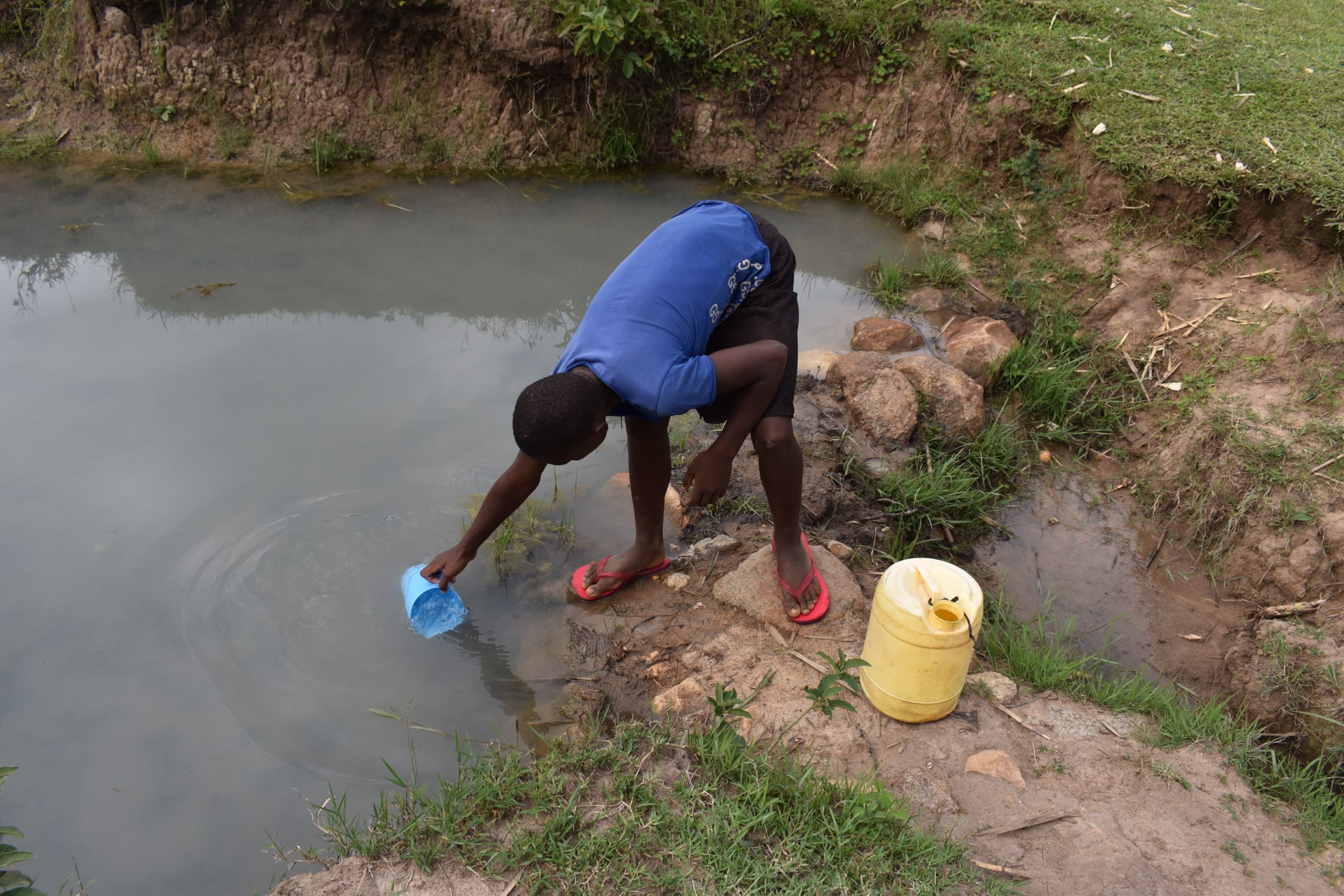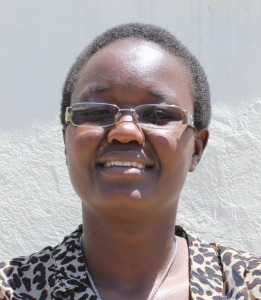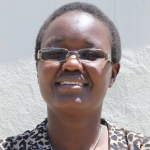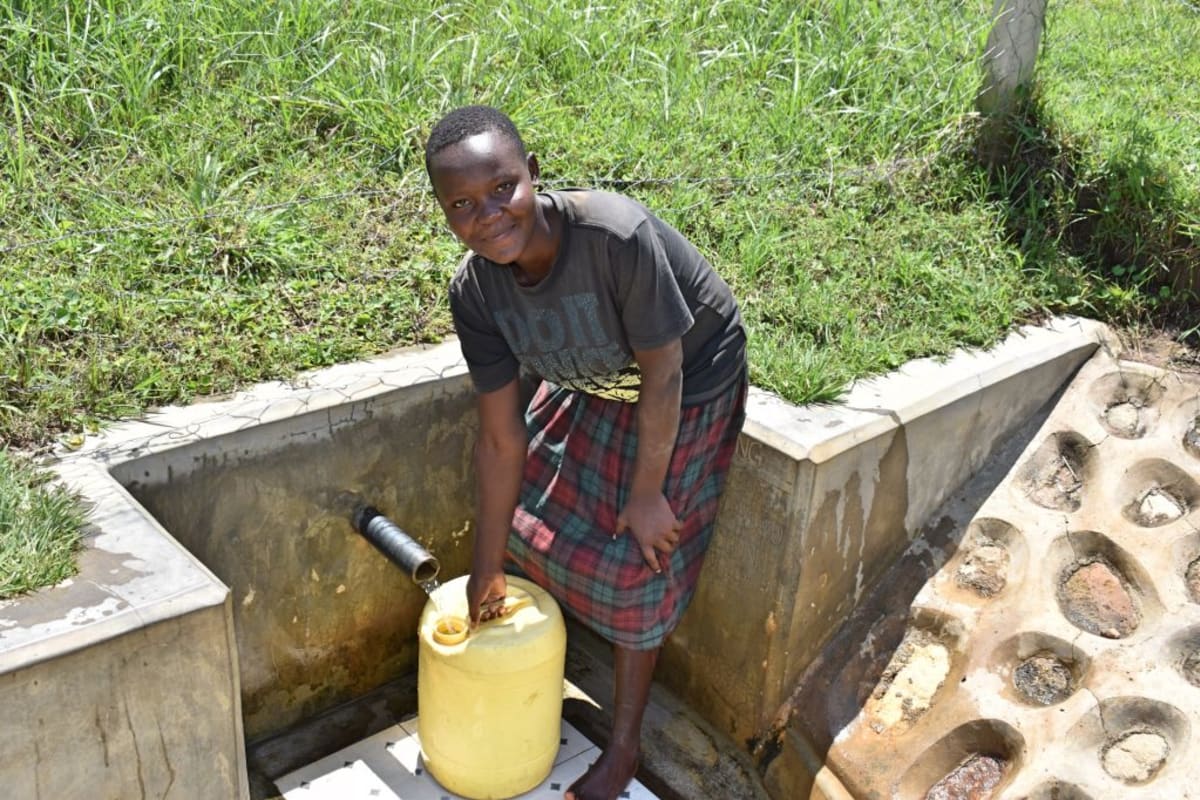The most common source of income for the 250 members of Mukaniro is farming. Families living here heavily rely on their only water source, Christopher Spring, not only to meet their daily drinking and household needs, but to make a living and survive.
Community members spend most of their time fetching water. They wake up early in the morning to collect water, make trips to the water point throughout the day, and then again in the evening, only to start the cycle over the next day. It steals so much of their time and energy that they cannot concentrate on other tasks to improve their living situations, and their bodies are exhausted.
When everyone crowds at the spring and wants to fetch water before the other to get on with their day, conflicts arise. At times, being unable to resolve the disputes leads to further disruption in the community by getting the village leaders involved, which eats up everyone's valuable time.
The water at the spring is milky-colored and not safe to drink. It is open to contamination, especially during the rainy season when all the dirty water uphill washes down into the spring.
The health of the water users, especially young children, is suffering from repeated cases of waterborne diseases like typhoid and diarrhea. People feel ill, so they miss work or school. When it lingers, they must seek medical treatment and pay hospital bills they can't afford. But they must drink water to survive, so they fall ill again, and the cycle continues, keeping them in a perpetual state of poverty. The cost is too high!
"I personally need this water to survive. That is why you see me fetching water here. This is because I don't have a choice. Instead, I will drink this same water, knowing that I will become sick of typhoid. Protecting the spring will be a blessing to me and my family because we have suffered for so long until sometimes we don't even talk about it," said Adelide Christopher, 58.

Mary W., age 14, (pictured above) shared, "Fetching water from the spring has not been easy. It is dangerous because the source is open and as young children, we can even drown and this has created fear in us. I don't enjoy fetching water here because it is risky. Sometimes when we play, we fall inside the spring, making the water even more dirty and carry the same water back home for drinking, thus putting our health at risk."
Protecting the spring will help community members in Mukaniro improve their health, increase engagement in agriculture and other income-producing activities, attend school more regularly, and hopefully break the cycle of poverty so their lives can change for the better.
What We Can Do:
Spring Protection
Protecting the spring will help provide access to cleaner and safer water and reduce the time people have to spend to fetch it. Construction will keep surface runoff and other contaminants out of the water. With the community's high involvement in the process, there should be a good sense of responsibility and ownership for the new clean water source.
Fetching water is a task predominantly carried out by women and young girls. Protecting the spring and offering training and support will, therefore, help empower the female members of the community by freeing up more of their time and energy to engage and invest in income-generating activities and their education.
Training on Health, Hygiene, COVID-19, and More
To hold trainings during the pandemic, we work closely with both community leaders and the local government to approve small groups to attend training. We ask community leaders to invite a select yet representative group of people to attend training who will then act as ambassadors to the rest of the community to share what they learn. We also communicate our expectations of physical distancing and wearing masks for all who choose to attend.
The training will focus on improved hygiene, health, and sanitation habits in this community. We will also have a dedicated session on COVID-19 symptoms, transmission routes, and prevention best practices.
With the community's input, we will identify key leverage points where they can alter their practices at the personal, household, and community levels to affect change. This training will help to ensure participants have the knowledge they need about healthy practices and their importance to make the most of their water point as soon as water is flowing.
Our team of facilitators will use a variety of methods to train community members. Some of these methods include participatory hygiene and sanitation transformation, asset-based community development, group discussions, handouts, and demonstrations at the spring.
One of the most important issues we plan to cover is the handling, storage, and treatment of water. Having a clean water source will be extremely helpful, but it is useless if water gets contaminated by the time it is consumed. We and the community strongly believe that all of these components will work together to improve living standards here, which will help to unlock the potential for these community members to live better, healthier lives.
We will then conduct a small series of follow-up trainings before transitioning to our regularly scheduled support visits throughout the year.
Training will result in the formation of a water user committee, elected by their peers, that will oversee the operations and maintenance of the spring. The committee will enforce proper behavior around the spring and delegate tasks that will help preserve the site, such as building a fence and digging proper drainage channels. The fence will keep out destructive animals and unwanted waste, and the drainage will keep the area's mosquito population at a minimum.

 Protected Spring
Protected Spring
 Rehabilitation Project
Rehabilitation Project






































